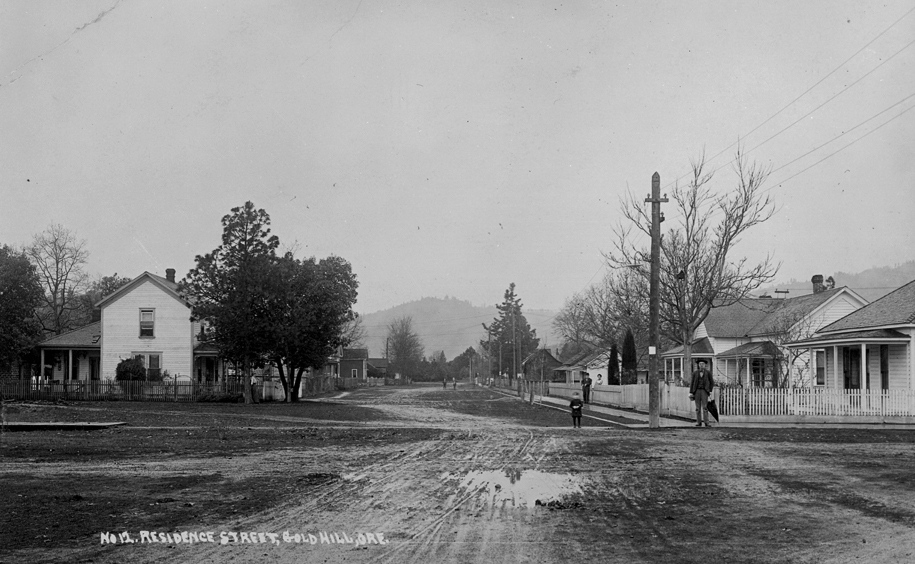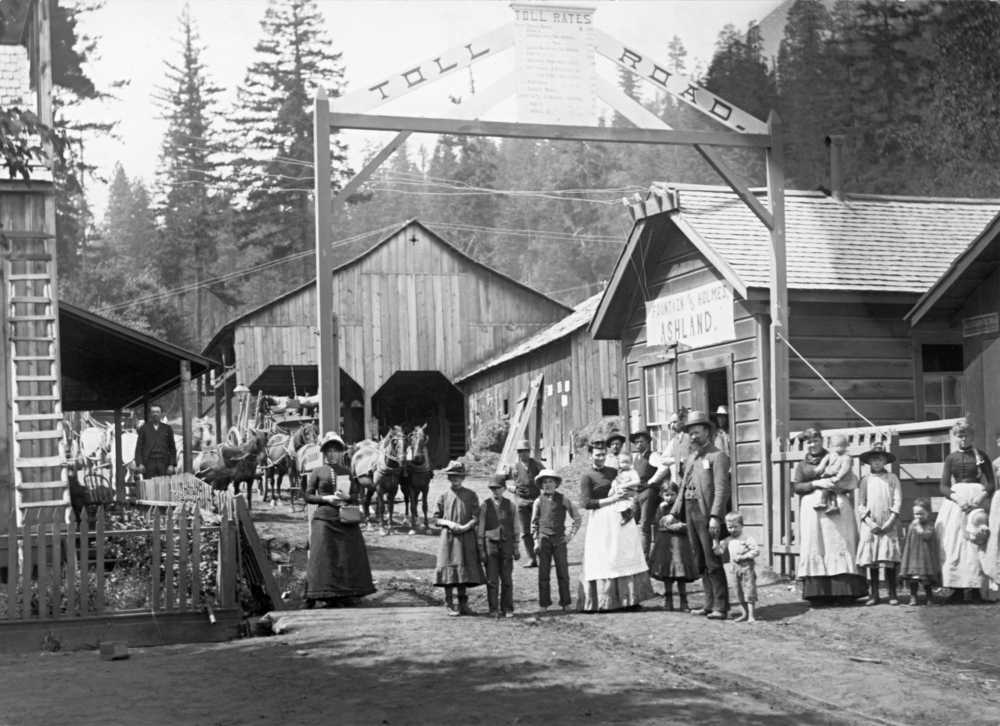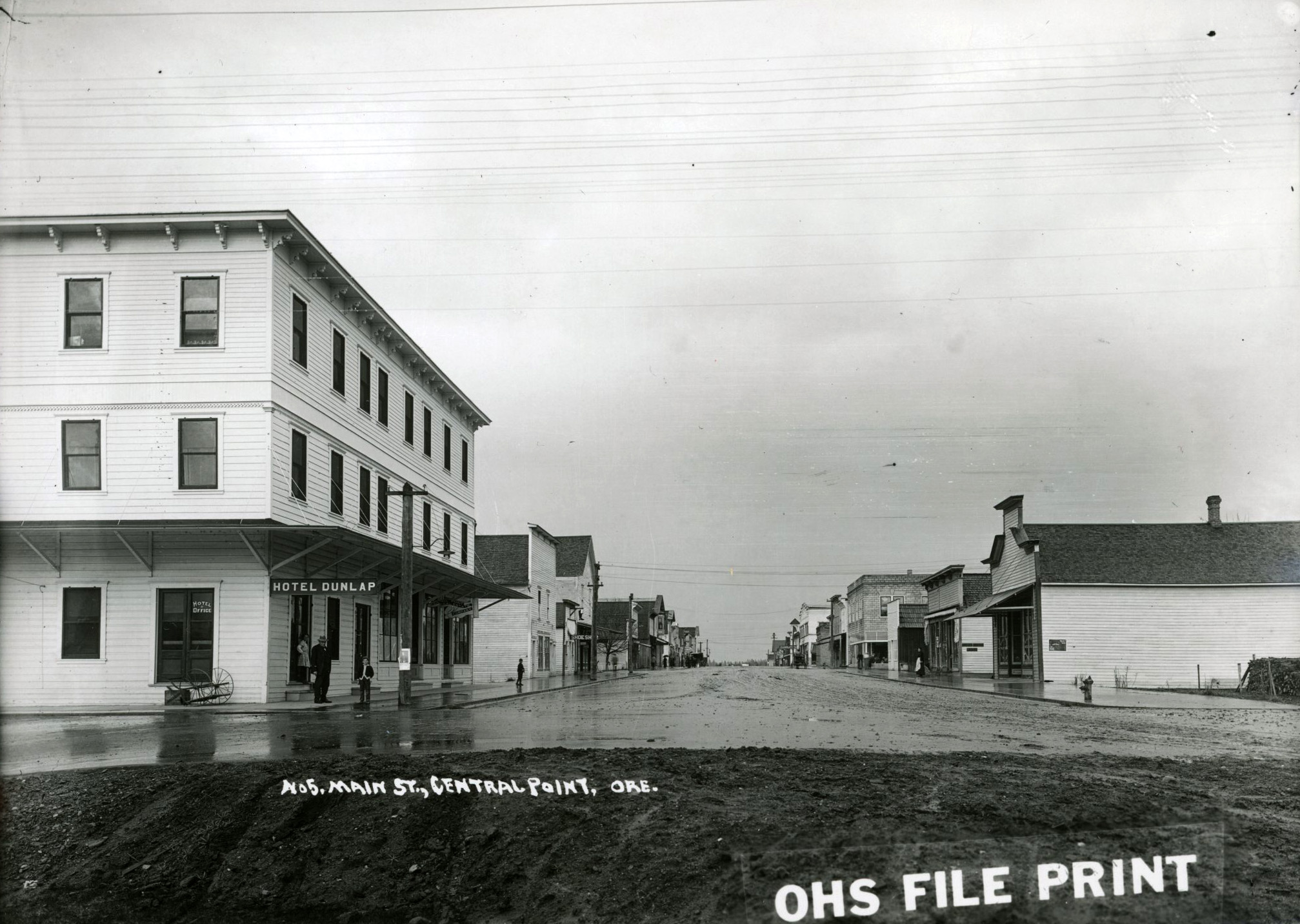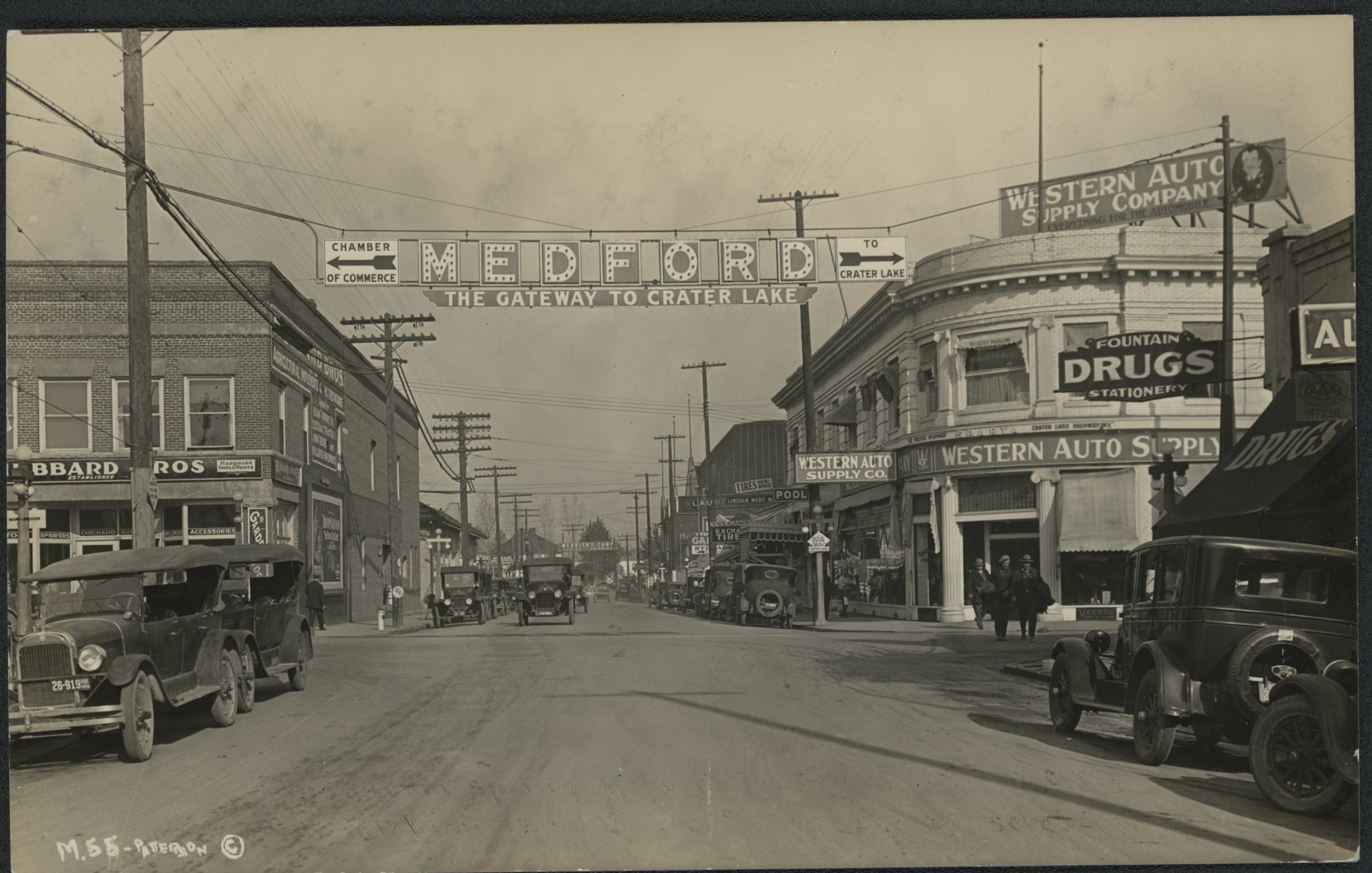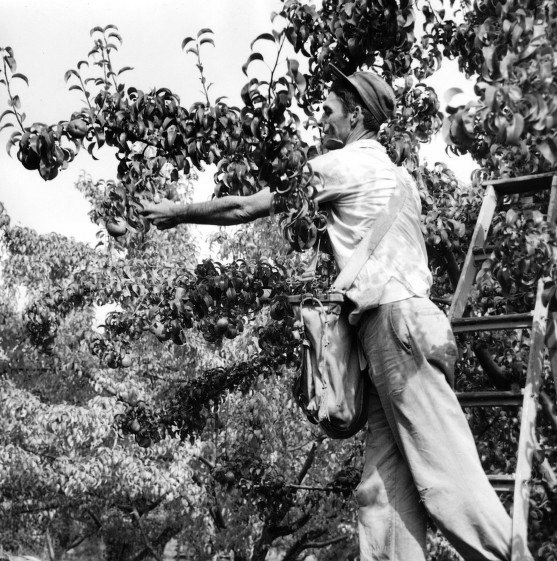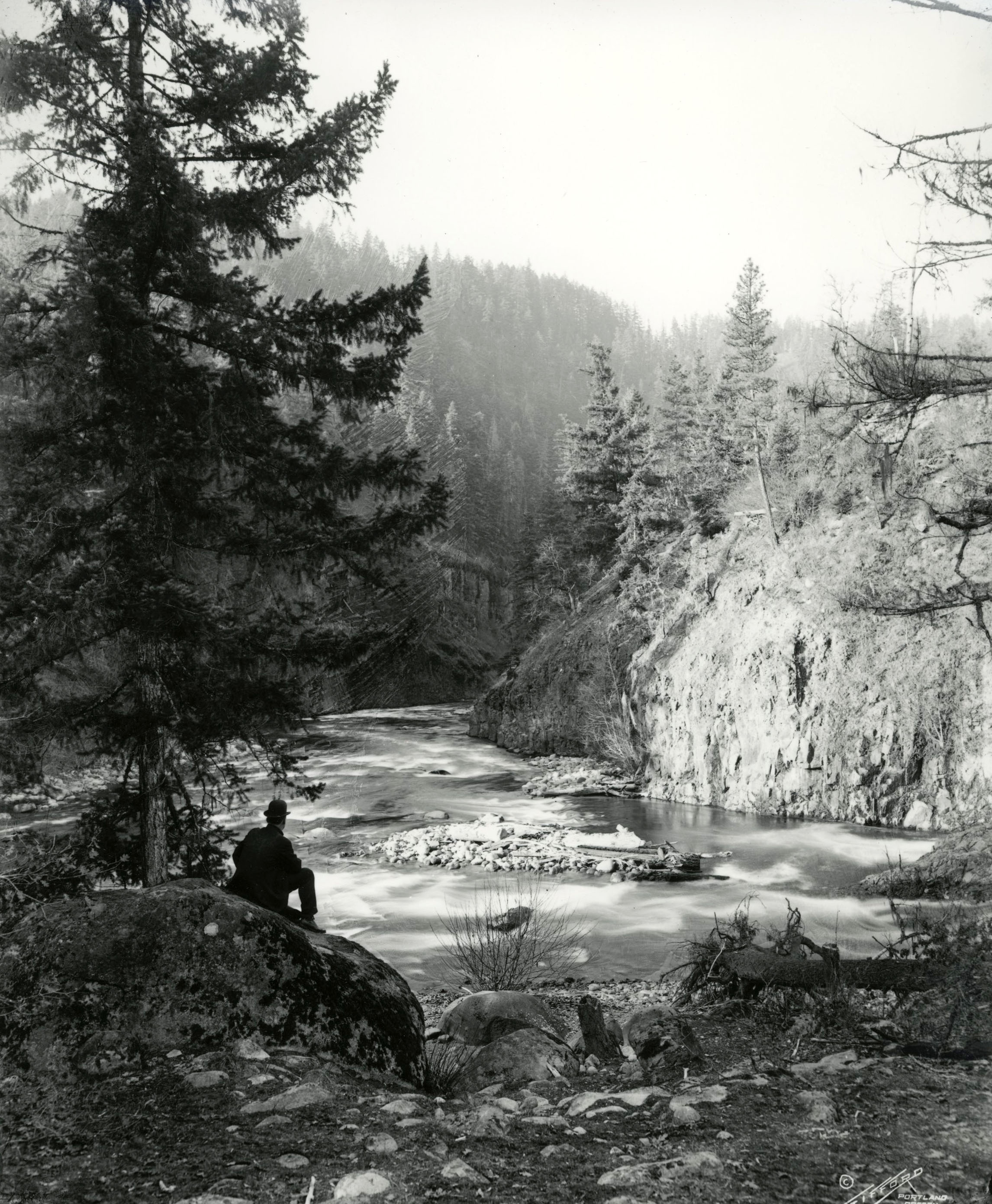The city of Gold Hill was founded on gold and the railroad—along with the acumen of one Thomas Chavner. Immigrating to the United States from Ireland when he was only six, Chavner had lived an adventurous life, from working Mississippi riverboats and trapping to becoming a Comanche interpreter and fighting in the 1846-1847 Mexican War. In 1857, the forty-one-year-old settler moved to a hamlet on the Rogue River named Dardanelles. He bought 160 acres for $750 from another claimant and established a farm near what would become Gold Hill. Although miners made up most of the population, other families—the T’Vaults, Ambroses, Swindens, Hawkinses, Rhotens, and Evanses—also settled near his claim.
In 1860, two men headed up the mountain in back of Chavner’s farm to search for stray horses. One of them became fascinated by some loose rocks with “dull, yellowish” streaks. He showed a large rock to Chavner, who recognized it as gold-bearing quartz. Inspecting the site, Chavner found brilliant-white quartz, laced with gold, scattered over the ground. He and four others immediately filed mining claims.
The lode was above ground, and Chavner and his partners extracted $700,000 worth of fine, "jewelry-like” gold and quartz nuggets (nearly $40 million in today’s dollars). Although the strike proved to be a pocket lode and played out in just eight months, Chavner had become a very wealthy man.
The hills were soon dotted with mines with such names as the Braden Mine, Cox and Lyman Vein, Smuggler, Rhoten Picket, Sylvanite, Mardon, and Cox. The miners fished the Rogue River for salmon, drank hard whiskey, bartered with gold, and resolved their differences “indifferently” or with bare knuckles and bottles.
Chavner began accumulating more land. He homesteaded and bought land outright while also acquiring property at foreclosure sales. His ranch eventually stretched three miles up the valley toward Central Point, with 1,600 acres of it within what would be the town of Gold Hill. He also owned saloons, hotels, and a toll bridge over the Rogue River.
Then the railroad came. In late 1883, Chavner sold the right-of-way through his land to the Oregon & California Railroad. He and his wife Rosa filed the plat map for the town of Gold Hill in January 1884, deeding the streets and alleys to the public. He then sold off land plots to residents. Gold Hill quickly developed into a bustling town with homes, bars, hotels, restaurants, warehouses, and stores. The nearby towns of Rock Point and Dardanelles disappeared when the railroad passed them by.
Thomas Chavner died in 1888 on his ranch at the age of seventy-two, leaving four adult children to continue the family's businesses. Gold Hill was incorporated in 1895, but by the early twentieth century the gold mines had played out. Over the years, pear orchards blossomed, followed by wine grapes, but the only major industry in town was the Ideal Cement plant, which closed in 1968.
Nearby Medford, located strategically between Grants Pass and Ashland, became the county seat and the region’s major city, and Gold Hill lost its prominence. In 2020, the population of Gold Hill was 1,335, about what it was a century ago. In recent years, retirees from California and other states—attracted by low-cost real estate, small-town life, a beautiful landscape, and proximity to Medford—have discovered Gold Hill and are buying homes there, stabilizing the population.
-
![Gold Hill (no date).]()
Gold Hill, street scene, bb007587.
Gold Hill (no date). Oreg. Hist. Soc. Research Lib., bb007587
-
![Luke Jenning's home, Gold Hill (no date).]()
Gold Hill, Jennings home, bb007586.
Luke Jenning's home, Gold Hill (no date). Oreg. Hist. Soc. Research Lib., bb007586
-
![School house, Gold Hill, 1890.]()
Gold Hill, school house, 1890, bb007582.
School house, Gold Hill, 1890. IOreg. Hist. Soc. Research Lib., bb007582
-
![Railroad depot and Gold Hill Hotel and Tavern, May 1961.]()
Gold Hill, RR depot and hotel at, May 1961.
Railroad depot and Gold Hill Hotel and Tavern, May 1961. Ben Maxwell photo, Salem Public Library, 6073
-
![Gold Hill Baseball Team, 1914. Back: Charlie Reed, Harry Porter, unk., unk., Alvie Walker, Bill Kelsey, Doc Eatings, unk.; front: Blackington, coach John Cameron, unk.]()
Gold Hill baseball team, 1914, bb007590.
Gold Hill Baseball Team, 1914. Back: Charlie Reed, Harry Porter, unk., unk., Alvie Walker, Bill Kelsey, Doc Eatings, unk.; front: Blackington, coach John Cameron, unk. Oreg. Hist. Soc. Research Lib., bb007590
-
![Drift boat on Rogue River at Gold Hill, May 1973.]()
Gold Hill, Rogue River at, May 1971.
Drift boat on Rogue River at Gold Hill, May 1973. Oreg. Hwy Div. photo, Oreg. State Archives, OHD8034
-
![Gold Hill (no date).]()
Gold Hill, panorama, bb007579.
Gold Hill (no date). Oregon Journal photo
Related Entries
-
![Ashland]()
Ashland
Ashland, a city of 21,360 people in Jackson County, is situated in the …
-
![Central Point]()
Central Point
Central Point is located about thirteen miles south of Table Rocks in t…
-
![Medford]()
Medford
Medford, the county seat of Jackson County, was platted in 1883 in the …
-
Pears and the pear industry
European pears (Pyrus communis) thrive in the temperate climate of the …
-
![Rogue River]()
Rogue River
The Rogue River, Oregon’s third-longest river (after the Columbia and W…
Related Historical Records
Map This on the Oregon History WayFinder
The Oregon History Wayfinder is an interactive map that identifies significant places, people, and events in Oregon history.
Further Reading
Morehouse Genaw, Linda. Gold Hill and Its Neighbors Along the River. Central Point, Ore.: Linda Morehouse Genaw, 1988.



